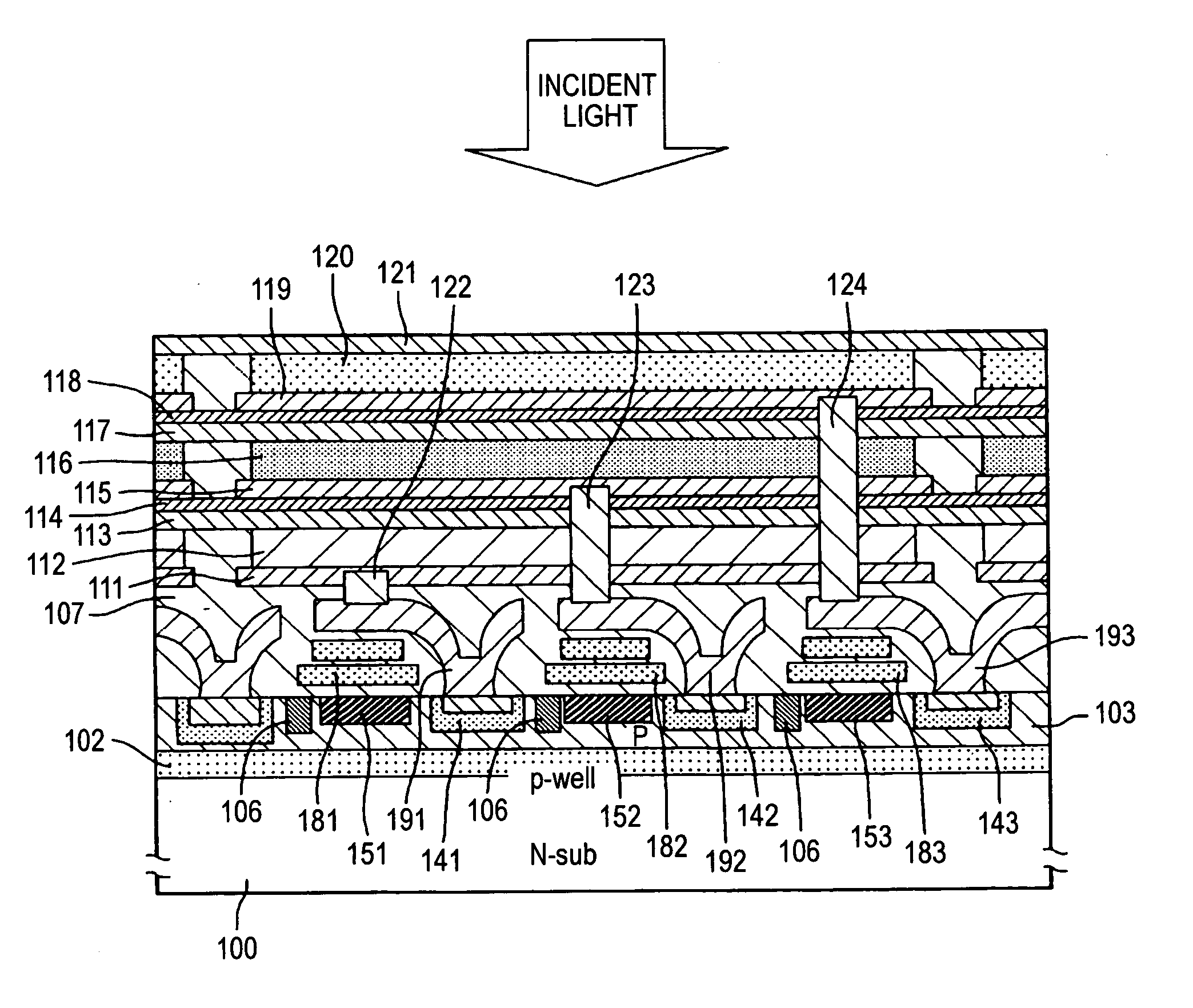Photoelectric converting layer lamination type solid-state image pick-up device
a photoelectric and lamination technology, applied in the direction of radio frequency controlled devices, instruments, television systems, etc., can solve the problems of poor manufacturing yield, small upper limit of optical charges stored in one light receiving portion which is microfabricated, and progress of ccd type image sensor and cmos type image sensor techniques to an almost limit, so as to avoid the generation of shading
- Summary
- Abstract
- Description
- Claims
- Application Information
AI Technical Summary
Benefits of technology
Problems solved by technology
Method used
Image
Examples
first embodiment
[0033]FIG. 1 is a typical sectional view corresponding to one pixel of a photoelectric converting layer lamination type solid-state image pick-up device according to the invention. A signal reading circuit is formed in a surface portion of a semiconductor substrate 100. The signal reading circuit may be constituted by an MOS transistor circuit in the same manner as in FIG. 5 or may be constituted by the same charge transfer path as that in the related-art CCD type image sensor as shown in FIG. 1.
[0034] In the photoelectric converting layer lamination type solid-state image pick-up device shown in FIG. 1, a P well layer 102 is formed in the surface portion of the n-type semiconductor substrate 100, and furthermore, a diode portion 141 to be a first color charge storage region, a diode portion 142 to be a second color charge storage region and a diode portion 143 to be a third color charge storage region are formed in a P region 103 in the surface portion and charge transfer paths 151...
third embodiment
[0051]FIG. 3 is a typical view showing a surface of a photoelectric converting layer lamination type solid-state image pick-up device according to the invention. In the photoelectric converting layer lamination type solid-state image pick-up device according to the embodiment, an area of a pixel 202 in a peripheral part of the device is set to be larger than that of a pixel 201 in a central part thereof. In other words, the area of the pixel is gradually increased from the central part of the device toward the peripheral part thereof.
[0052]FIG. 4A is a typical sectional view showing photoelectric converting layer portions of the pixel 201 in the central part of the device and the pixel 202 in the peripheral part of the device shown in FIG. 3. It is shown that areas of the photoelectric converting layers 112, 116 and 120 to be the first, second and third layers of the pixel 202 in the peripheral part of the device are larger than those of the photoelectric converting layers 112, 116 ...
PUM
 Login to View More
Login to View More Abstract
Description
Claims
Application Information
 Login to View More
Login to View More - R&D
- Intellectual Property
- Life Sciences
- Materials
- Tech Scout
- Unparalleled Data Quality
- Higher Quality Content
- 60% Fewer Hallucinations
Browse by: Latest US Patents, China's latest patents, Technical Efficacy Thesaurus, Application Domain, Technology Topic, Popular Technical Reports.
© 2025 PatSnap. All rights reserved.Legal|Privacy policy|Modern Slavery Act Transparency Statement|Sitemap|About US| Contact US: help@patsnap.com



